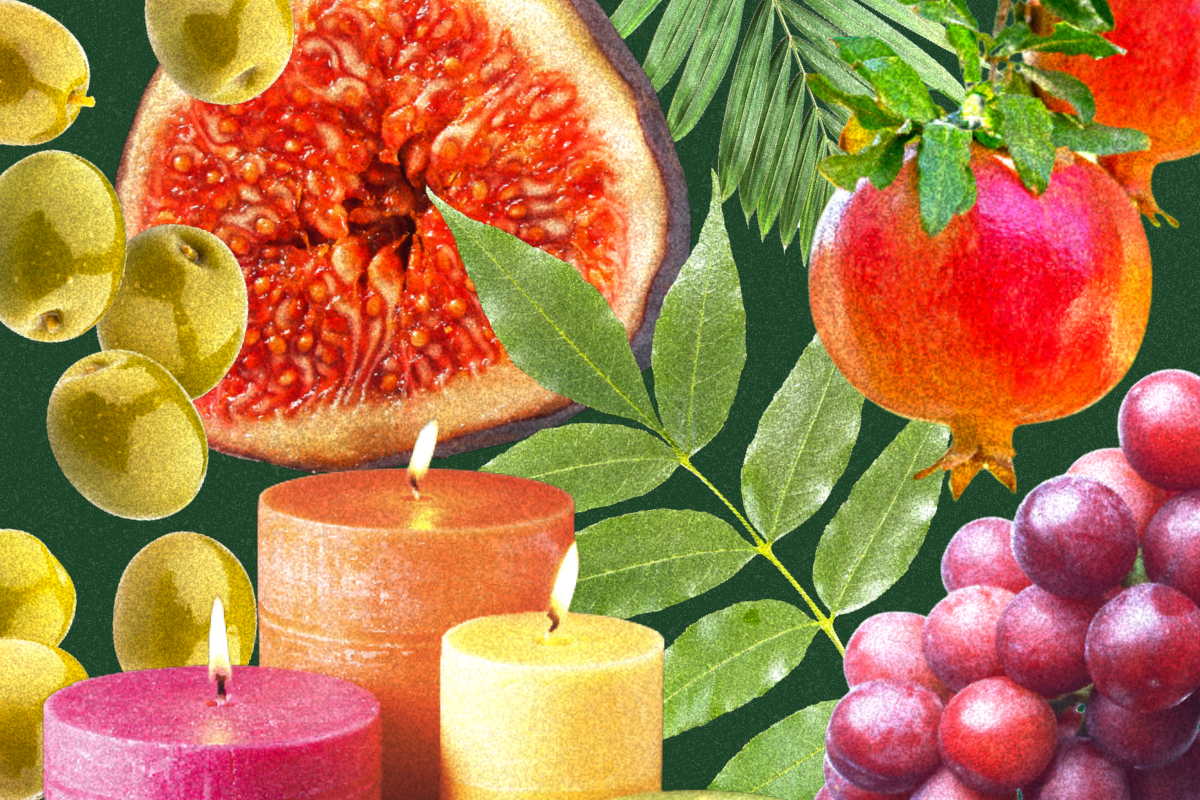Trees are a powerful life force. They provide us with the oxygen we breathe, the fruits we eat and the shade we need on hot summer days. On a physical level, they do a lot for us, and Tu Bishvat is a celebration of their efforts.
But trees are sources of spiritual comfort, too. The sound of wind rustling leaves, the smell of clean Earth and the firm support of a trunk against your back nurture the human spirit, and we have a cross-species responsibility to return the favor.
This spiritual significance of nature and the importance of Tu Bishvat have been preached by practitioners of Kabbalah, Jewish mysticism, dating back to medieval times. Students of Isaac Luria, a rabbi and renowned Kabbalist, believed all living beings held within them some piece of the divine. This belief applied to certain fruits native to the land of Israel, which, when eaten, were said to release sparks of the divine into the world.
Kabbalists prioritized the nurturing and honoring of nature, often through magic rituals. Regardless of your personal religious and spiritual beliefs — whether you can wrap your brain around Kabbalism or not — there is no denying the power in holding intentional space.
If you’re interested in dipping a toe or two into the waters of Jewish magic, Tu Bishvat is the perfect time to do so.
Setting Up
It may seem like a no-brainer, but it is important that this ritual take place outside; preferably in nature, or as close to it as you can come. Finding a solitary spot beneath a tree is ideal, but everyone’s access to outdoor spaces is different, so do your best.
Magical tools are optional, but can help enhance your experience and anoint your space. Lighting candles assists in bringing in a divine presence, and the use of traditional Jewish herbs can evoke ancestral connections through the olfactory senses. A comprehensive list of prominent herbs used in the Jewish tradition can be found here.
How you set up your space is entirely up to you and your fellow practitioners, but I must stress the importance of practicing fire safety should you choose to use candles. I recommend using a tray or a flat surface of some kind, arranging candles in a fashion that feels right to you and sprinkling your chosen herbs around the surface of the tray.
The beauty of such a ritual is that there are no rules, only vibes — use your own intuition and will to carve out a space for your ritual.
Meditation
The following meditation was created by Kabbalist Abraham Abulafia and publicized by Rabbi Aryeh Kaplan. It utilizes the first Hebrew letter of God’s name, Yood, along with a handful of vowels, breathing techniques and movements.
The vowels — Oh, Ah, Ay, Ee and Oo — each correspond with a head movement that best matches how the vowel mark is written out in Hebrew. Attached to the letter Yood, the sounds become: Yoh, Yah, Yay, Yee, Yoo.
Inhale as you turn your head in a given direction. Then, as you move it back, exhale, pronouncing the sound. It should look like this:
- Inhale and look up
- Exhale on a Yoh, moving head back to center
- Inhale and look to the left
- Exhale on a Yah, moving head back to center
- Inhale and look to the right
- Exhale on a Yay, moving head back to center
- Inhale and look down
- Exhale on a Yee, moving head back to center
- Inhale and move your head backward (as if making a double chin)
- Exhale on a Yoh, moving your head forward
It may feel silly at first, but with repetition you will be able to drop into the meditation. I recommend doing this sequence at least 15 times all the way through, even when it feels difficult. Meditation is by no means easy, and requires undivided attention. If you feel your mind wander be gentle with yourself — simply acknowledge what’s happening, and bring yourself to center again.
Seder
Of course, no Jewish ritual is complete without food. On Tu Bishvat, it is customary to eat the foods for which the land of Israel is praised: grapes, dates, pomegranates, figs and olives. A traditional Tu Bishvat seder also includes barley and wheat. You can plan to eat your seder outside in the same place you did your meditation, or you can move inside and create an intentional space around your table. Feel free to move your ritual items onto your table if you’re moving inside to keep the vibes intact.
In terms of prayer, there are a variety of options from which to choose. I’ve chosen the following prayers from the Jewish Women’s Center of Pittsburgh’s Tu Bishvat Seder and “The Book of Jewish Sacred Practices: CLAL’s Guide to Everyday & Holiday Rituals & Blessings” by Rabbi Irwin Kula and Vanessa L. Ochs, Ph.D.
For Tu Bishvat in particular, I prefer prayers that reference the eternal forces of nature and the universe, rather than the singular God.
Recite the following prayers before eating:
N’varech et ayin hachayim matzmichat p’ri hagafen.
Let us bless the Source of Life that ripens fruit on the vines.
Gan raveh simeinu b’tal, tal bo t’vareich mazon. Baruch atah morid ha’tal.
Blessed are You who sustains us with what we need: water, light, and growth.
Recite the following prayer at the end of the ritual:
Baruch atah oseh ma’aseh v’reishit.
Praised are You, Renewer of the works of creation. Let me be attentive to the wonder of Your world.
Looking forward
Given that Tu Bishvat is a celebration of the new year for the trees, it’s essential that we think about how we will protect and advocate for them. Similarly to the High Holy Days, Tu Bishvat prompts reflection on our wrongdoings and ways in which we can be better in the future.
We are experiencing rapid, terrifying climate change, and the natural world that this holiday centers around is in grave danger. That said, one of the most spiritual ways you can celebrate Tu Bishvat is by making a plan for getting involved or continuing involvement in climate advocacy.
A great place to start is with Sunrise Movement, a grassroots organization that focuses on climate policy and applying political pressure for environmental justice. Organizing for an environmentally sound future is an act of spiritual defiance perfect for this holiday.
Welcome to Tree Week! In the days surrounding Tu Bishvat 5784, we at Hey Alma are celebrating all things tree and natured-related. Check back in all week for more on the special Jewish connection to our planet.




